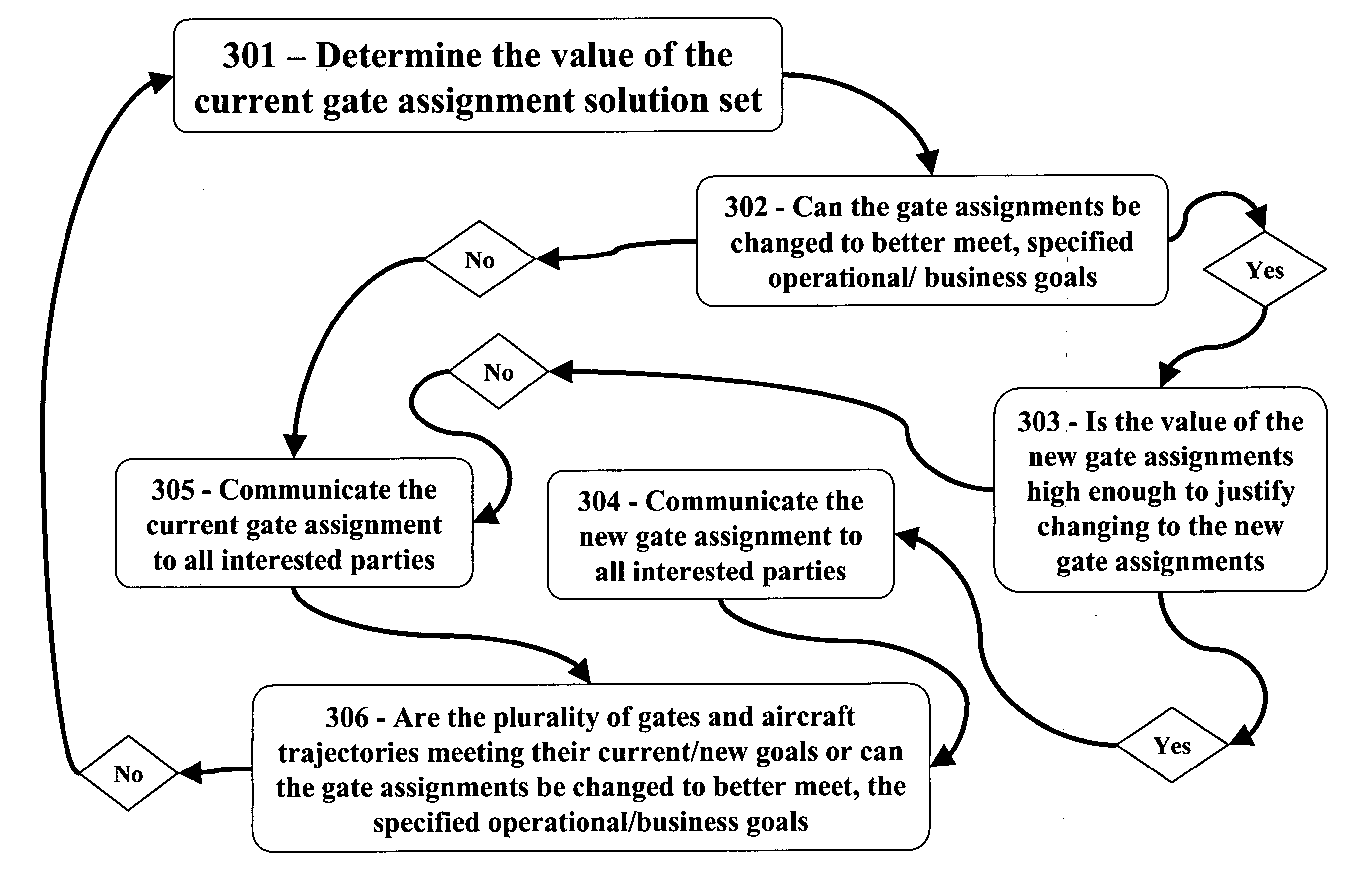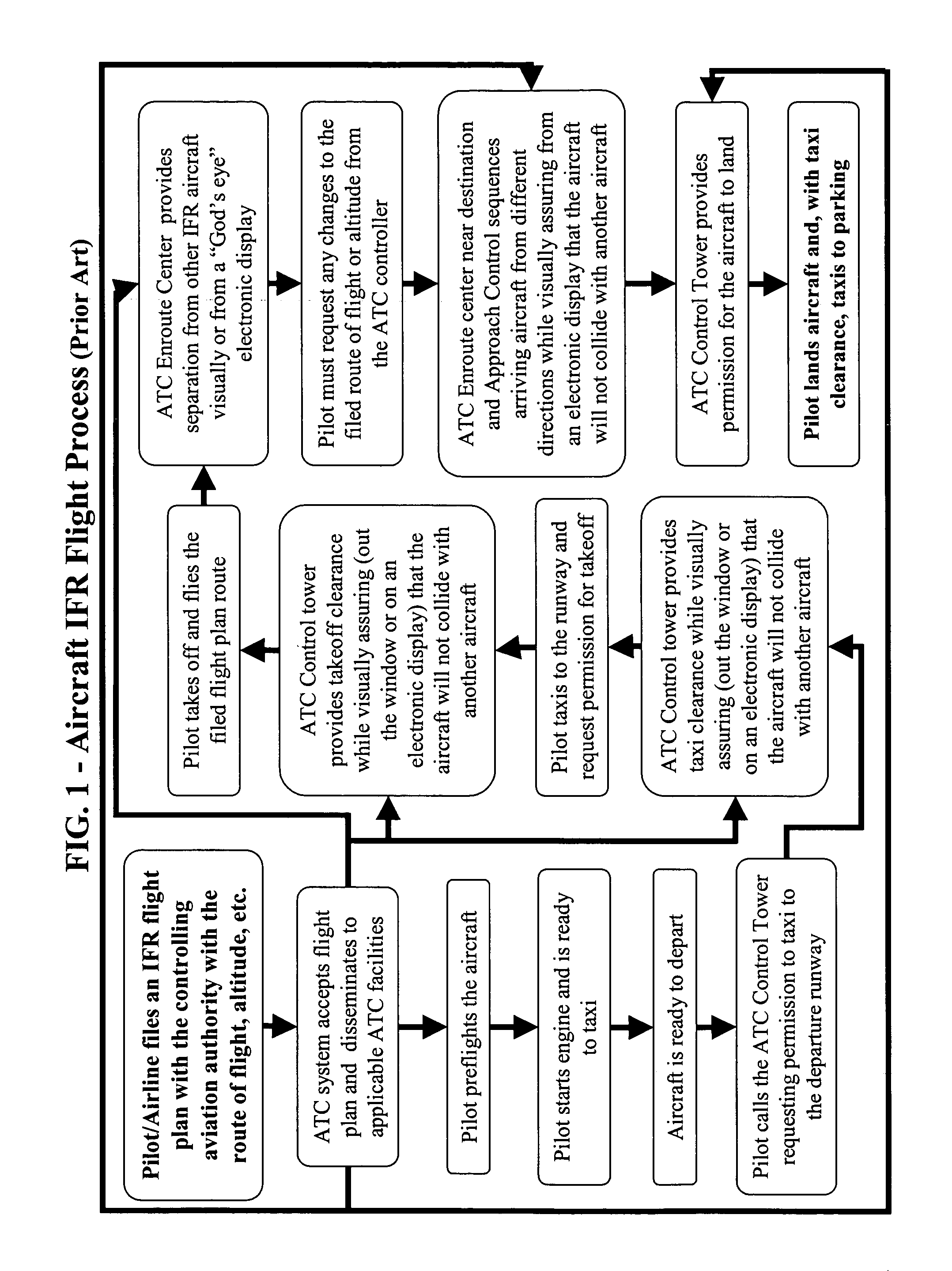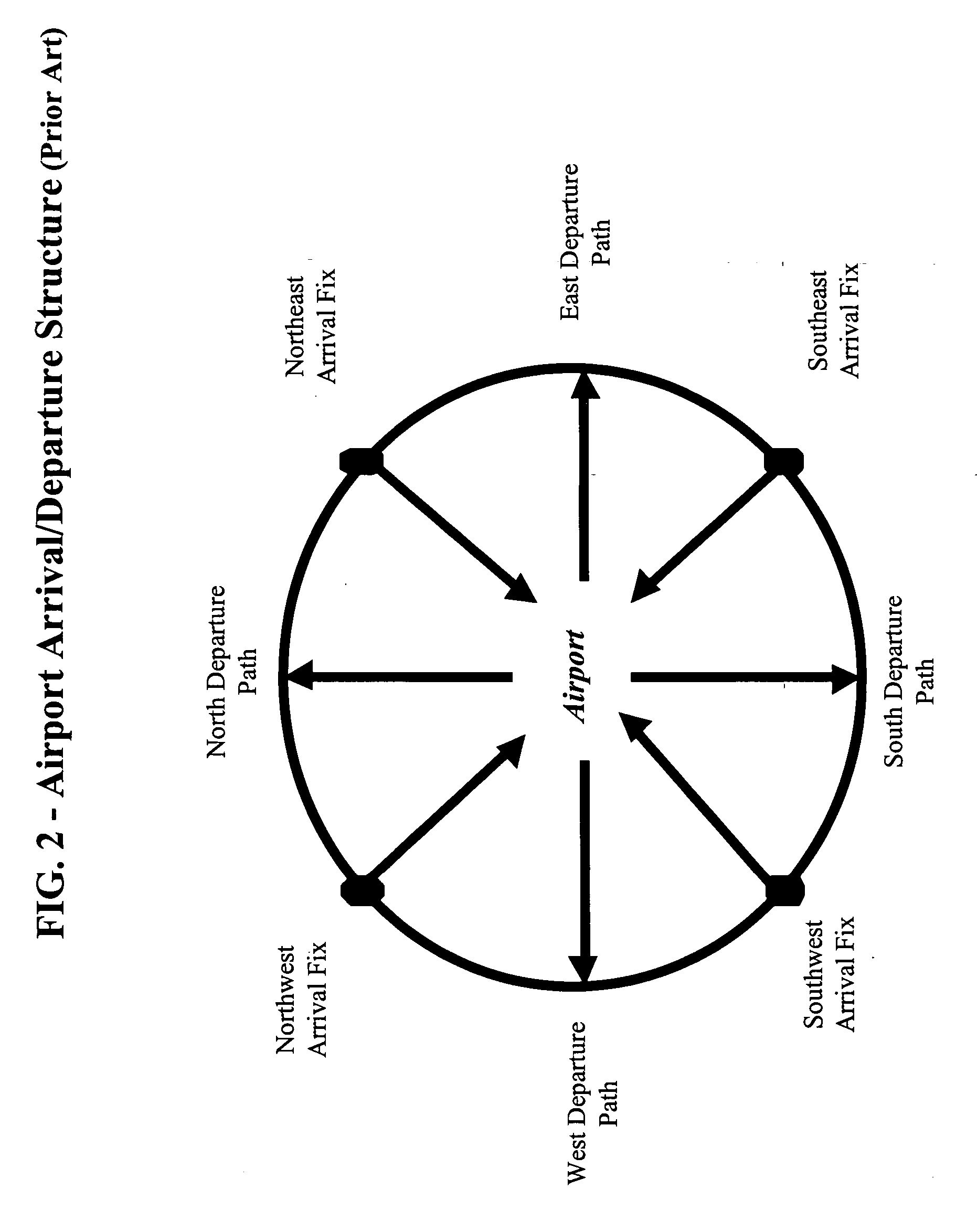Method and system for tactical gate management by aviation entities
a technology for aviation entities and gate management, applied in process and machine control, instruments, navigation instruments, etc., can solve the problems of many complex methods and optimization systems, unresolved overall optimization of key aspects, and few successful attempts by various parties, so as to enhance the overall operation efficiency and increase the efficiency of operation.
- Summary
- Abstract
- Description
- Claims
- Application Information
AI Technical Summary
Benefits of technology
Problems solved by technology
Method used
Image
Examples
example 3
increased predictability of the aircraft arrival / departure time based on the tactical gate assignment, the process of the present invention helps the airlines / users / pilots to more efficiently sequence the ground support assets such as gates, fueling, maintenance, flight crews, etc.
For example, less gate changes are required, less labor is needed to make such changes, and the entire gate assignment arrival process becomes more predictable and stable, thus allowing the airline's secondary processes (crews, cleaners, fuelers, etc.) to increase efficiency.
example 4
tions typically require a large number of actions to be accomplished by an airline in a very short period of time, thus requiring the maximum utilization of the assets. One such group of important assets is the gates. Typically in a tightly grouped hub operation, the departures of an airline's aircraft from the last hub operation compete for gate assets with the arrivals of the same airline for the next hub operation. If an aircraft is early or late, it can have a negative impact on the passengers and the throughput of the airport. For example, if the winds are such that many of the aircraft in an arrival bank arrive 20 minutes early, more often than not, these aircraft must wait for a gate, even though some gates are available.
By only assigning gates in the 3 to 5 hour window prior to arrival, the gate assignment process can take into account the early arrivals and assign gates to try and accommodate all of the early arriving aircraft.
Further, if all of the arriving aircraft can...
example 5
one can look at the example of the impact of a tactical gate assignment process to the aircraft passenger boarding. If a flight on gate A is 5 hours late, it can happen that it is boarding at the exact same time as an on schedule departure at gate B. If both of these flights are full, large international aircraft (B747), the number of people trying to board is well in excess of 600 people. If these two gates are close together, the boarding lines can cross, creating confusion for the passengers and airline personnel. Additionally, the passengers of the late flight are already stressed and by boarding both aircraft simultaneously, right next to each other, more stress is added to the passengers.
PUM
 Login to View More
Login to View More Abstract
Description
Claims
Application Information
 Login to View More
Login to View More - R&D
- Intellectual Property
- Life Sciences
- Materials
- Tech Scout
- Unparalleled Data Quality
- Higher Quality Content
- 60% Fewer Hallucinations
Browse by: Latest US Patents, China's latest patents, Technical Efficacy Thesaurus, Application Domain, Technology Topic, Popular Technical Reports.
© 2025 PatSnap. All rights reserved.Legal|Privacy policy|Modern Slavery Act Transparency Statement|Sitemap|About US| Contact US: help@patsnap.com



